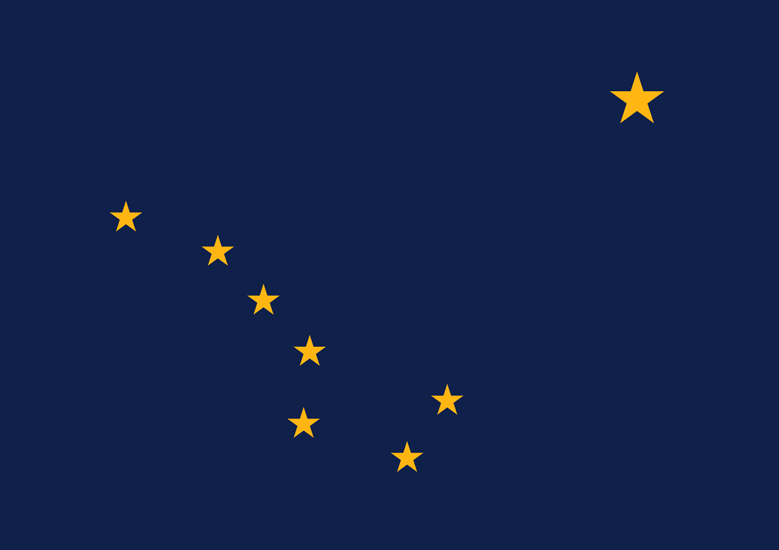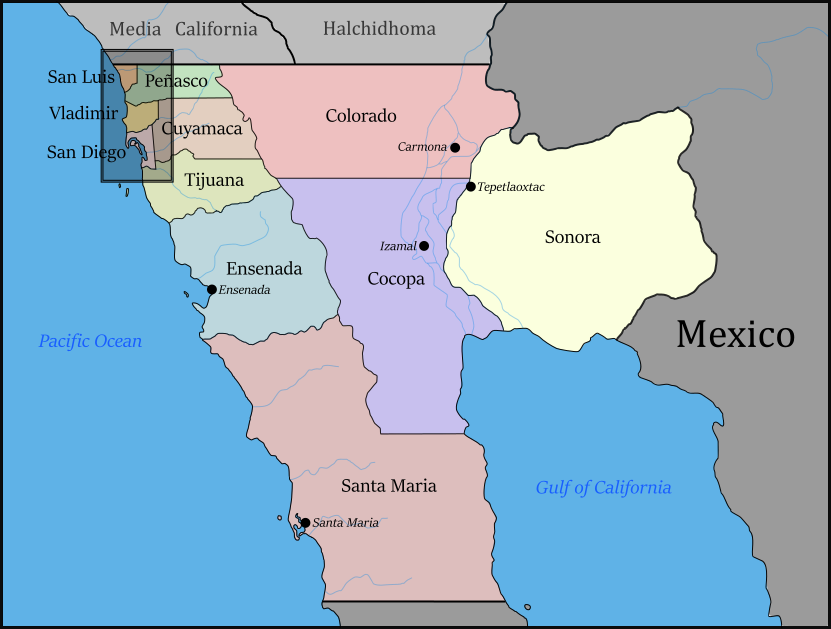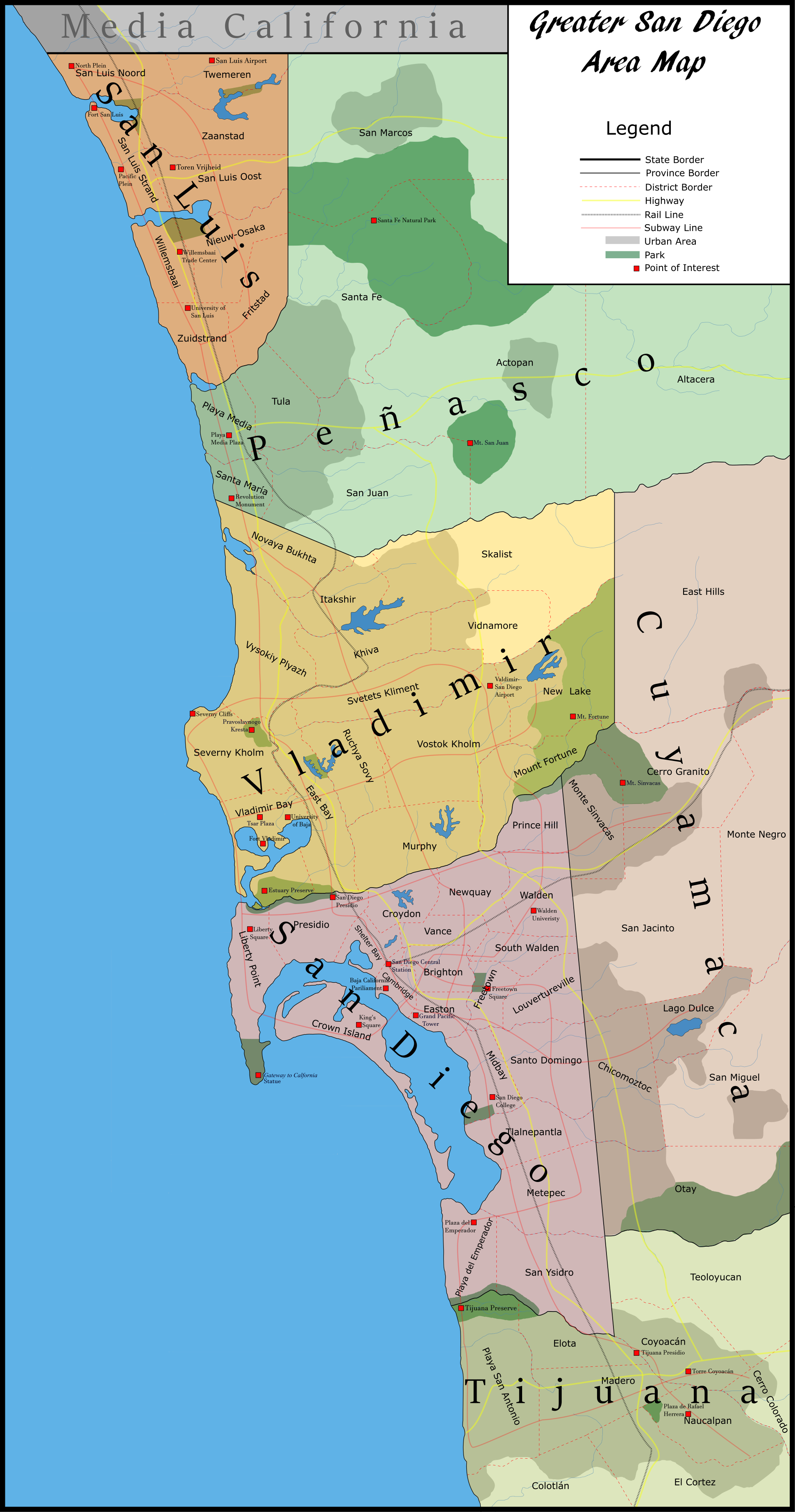What year is this set in?
Present day. Some maps have shown points in history, but they show the date. Anything without a date is in the present.
Will Socialism start to spread?
Turquoise Blue has written the most about the ASB's poltics. Socialism has indeed been a force since the 1890s. The "Red Seventies" were the high point of their influence in the national government, and they are definitely still around.
http://karnell.weebly.com/chief-ministers.html
Will there be any wars against Mexico?
The time of highest tension between the ASB and Mexico would be the last 3 decades of the nineteenth century. Mexico was aggressively encouraging settlers to homestead in the Great Plains, which put pressure on the indigenous people and on the small settlements of Louisianans and other ASB people who were already in the region. A war during that era would be interesting to explore, because at the time the ASB had no national armed forces to speak of.
This TL has been the best thing I've found here all day.
Thanks, and I'm sorry it's so many dozens of days after you posted.

Wonderful TL

The idea of a North America much more culturally and politically diverse but without numerous small wars is a very interesting utopia and the background work to back it up is honestly impressive.
Well thanks. It definitely is utopian. I read a blog recently about the proliferation of dytopias in AH... although I feel that it all comes from a culture that's just generally pessimistic right now. Either way, I'm happy to buck the trend. However I will say that there are lots of small wars. The states didn't stop habitually fighting amongst themselves until the midpoint of the 1800s. As the political architecture of the ASB matured, it managed to limit and contain these wars, eventually stopping them altogether.
Some questions:
Could you give a global image of the world since the "PoD"? I understood that Britain is sort of a mess and that France got a very different history than OTL, and of a massive Russia, but that's all kind of blurry and more infos would be great.
So... that giant Russian commonwealth is by far the most salient fact of world history and politics. It's far less realistic than the ASB itself, and I'm not ashamed to say it started as a joke. It's just that I found myself imagining the people and structures and government of my silly creation, and pretty soon I liked it. So the world situation has to take that into account. A lot of wars were fought by coalitions of nations trying to limit or break that powerful axis.
Breaking through some of the haze, I know that England (with Wales) constitute a kingdom. Scotland is a republic; so is France. Germany is divided up: Brandenburg is a strong northern power and is in de facto control of the ports of Lübeck and Hamburg (essential to prevent Sweden/Russia from controlling the entire German coast). There is a loose federation in the center of Germany. A descendant of the Habsburg empire still exists in Central Europe and part of the Balkans. China is truncated and still has a few foreign concessions in certain ports.
Beyond these places I truly don't have anything. That's always been my prefered style, starting from minor details and working my way up to the grand picture. People I've collaborated with can sometimes find that infuriating, but evidently that's just how I work.
Also, since this TL seems based on oddities that never existed OTL, I wondered if there existed a sort of blend between Indian tribes and the French Coureur-des-bois? Perhaps also with a weird religious syncretism

That is precisely the core of the identity of many of the Francophone states. People from Huronia, the Upper Country, Illinois, and Assiniboia would all describe their states' origins in almost exactly those terms. It's sort of a romantic simplification, but the Indians and coureirs-des-bois are important to how those states define themselves. I've looked to Mexico and the concept of
mestizaje as something of a model. I admire the national identity that Mexico constructed for itself in the twentieth century, able to look to the ancient empires and say "That was us" in a way that North Americans in OTL really do not do with their deep past, because our national identity is based more on settlers coming over and starting fresh.
On that point, how is religion in the ASB? I noticed that a lot of Indian seems to have converted to Christianism, is it broadly the case in the whole ASB or has some Indian communities - or even states - retained their traditional belief?
Like you said, syncretism definitely happened. The almost universal colonial pattern in OTL has been the eventual spread of Christianity, but with indigenous practices surviving sort of underneath it all. That was the case in most of the ASB.
What facilitated the spread of Christianity? One cause is that even in OTL, a lot of the Jesuit and Moravian missionaries were legitimately good at what they did. They learned and lived the culture of the villages they stayed in, and they became integral parts of the mixed "middle ground" society. In TTL they fit in very comfortably, and we see them popping in and out of different episodes in the history, often occupying key roles mediating between the White and Indian worlds. In TTL you will also see English missionaries doing the same thing, something rare in OTL. The English were so demographically dominant in our timeline that they didn't much bother trying to convert the locals, and when they did, they didn't bother with any kind of cultural negotiation; they expected converts to adopt every aspect of English Protestant culture. In TTL that demographic dominance was much less pronounced, which meant English missionaries had to be more conscientious, and so you find Anglican and Baptist and Methodist churches among many of the indigenous communities.
That's not to say that things went smoothly in all cases. With no Spain-style empire imposing the religion from above, it's natural that the original practices survived in pockets. Places like Iroquoia and Chicasaw have some portion of the population that never embraced Christianity. And it's also common in recent years for traditional religious practices to be
revived even where they did not
survive. Mixed/Metis people are as much a part of this movement as people who identify as fully indigenous.
And finally, how are the Jews in this TL?
What I know is this: Alaska, California, and Oregon attracted many Russian Jews, along with a few other persecuted groups, in the 19th and 20th centuries. New Amsterdam was known as a place of religious pluralism in TTL, just like OTL (and that reputation really does go back to when it was a Dutch town), and so it has a vibrant Jewish population as well, as does Philadelphia. Nationalism worked in odd ways in TTL, so we shouldn't expect Zionism to be quite the same, either. But at this point I'm not ready to decide whether a Jewish state exists or not.
I'm interested in what the Dominion of Rupertsland is like. From the name, I presume it has a similar status to OTL Canada prior to its complete independence from the United Kingdom?
By now it's fully independent. So it's like Canada or any of the other Commonwealth Realms.
Rupertsland's a huge country, but its only good area for farming and inhabitation (the Prairies around OTL Alberta, Idaho, Saskatchewan, and Montana) is a long way from the sea and must be very difficult for Britain to govern.
I was very careful to draw the map so that Rupertsland includes that belt of land; IMO that is the only way to make it viable as a country. Rupertsland's origins are in the communities of workers for the Hudson's Bay Company. A great many of them were French speaking Metis who came from Canada and the Upper Country. Their work took them far beyond the reach of Canadian authority, and there was some mixing and interacting with settlers from England and Ireland; by the second quarter of the 1800s the Rupertslandians (?) had emerged as a distinct culture on the prairies. A great many were loyal subjects of the company-colony. The villages of Assiniboia, adjacent to the ASB, had the strongest links back east, and this was the part that at some point rebelled and became a state. That more or less purged the separatist element, and the next large settlement movement of Rupertslandians, in the Montana-Saskachewan region you described, was made up largely of loyalists. The settlements there became the nucleus of the modern state and the driving force behind its reorientation from a colony focused on exploiting the resources to a distinct civil society.
There'll probably be some ports on Hudson Bay, e.g. OTL Churchill and Moose Factory; will ports on Hudson Bay be more important in TTL? I think they have to be due to Rupertsland's unfortunate geographical position. Churchill could serve as Rupertsland's primary port, with a road to TTL's equivalents of Edmonton and Calgary.
Unfortunate is right. From the moment the first railroad was built, the most active ports for Rupertsland's trade have been on the West Coast. Protectionist policies have promoted the use of the Bay ports, but they just aren't practical for most purposes due to ice and the rugged intervening terrain. The majority of its trade goes through Oregon or California.
Rupertsland seems to be in a rather unique geographical position, and no OTL countries are quite like it. So I'm interested in its development. Did most immigrants to Rupertsland arrive from the ASB in the east, or from Oregon in the west, or directly from Britain via Hudson Bay? Or are most Rupertslanders indigenous?
The original population was made up of Metis from the Francophone ASB and English immigrants. There was a lot of cultural interchange between them and the indigenous people of the prairies. Their numbers were later augmented by other immigrants, especially from various parts of the ASB. The big northern lands are majority indigenous today, but the population centers are not.
I hope that addresses your questions in an okay way. Thanks very much for the interest.


